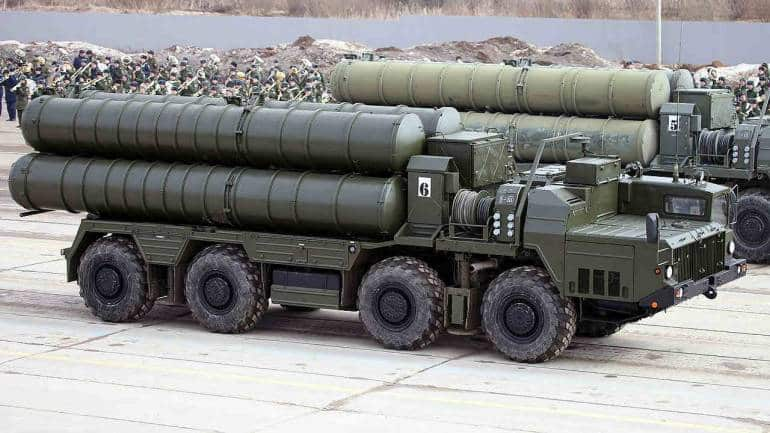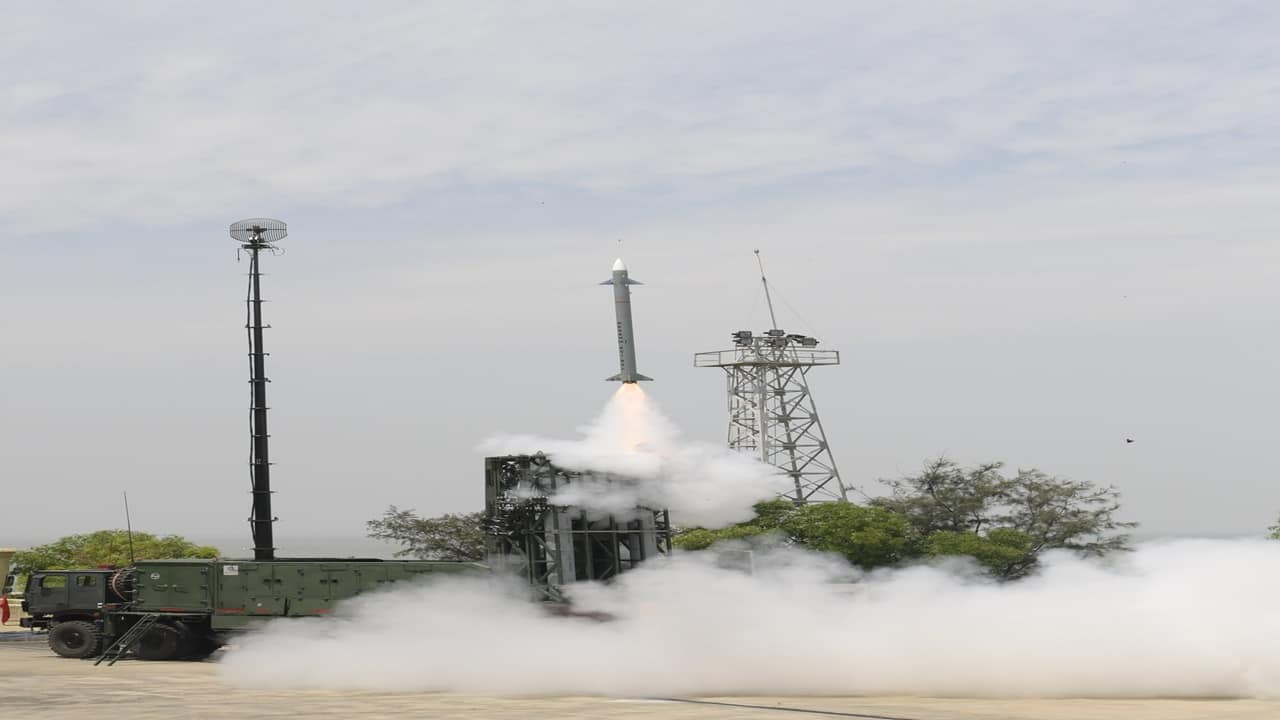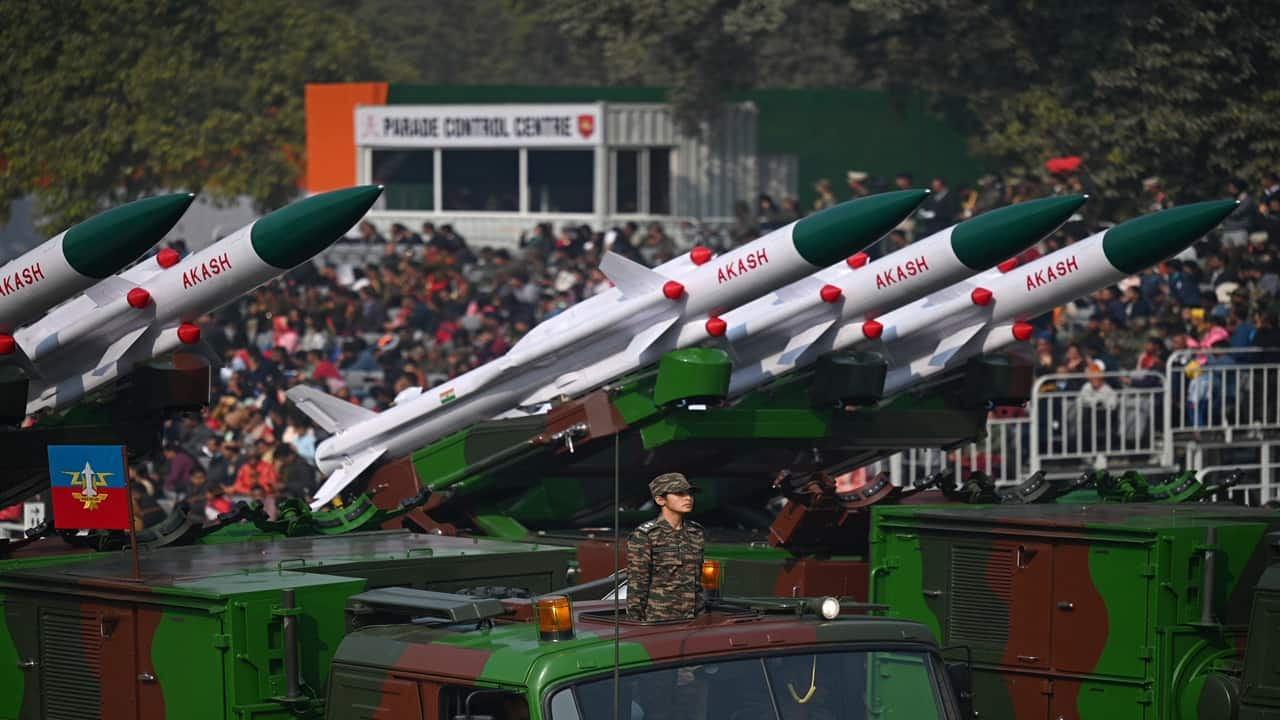



The intervening night of May 7 and May 8 was witness to a symbolic moment in Indian warfare, when the Indian Air Force used its S-400 Triumf air defence systems to stop incoming Pakistani aerial threats, displaying more than its military strength.
Catch live updates on the escalating border tensions between India and Pakistan
Interestingly, nicknamed the ‘Sudarshan Chakra’ after the divine weapon of Lord Vishnu and Lord Krishna in Hindu mythology, the S-400 reflects the same qualities - precision, speed, and long-range power to destroy threats before they can cause harm.

The S-400, developed by Russia’s Almaz-Antey, is among the world’s most advanced and versatile long-range air defence platforms.
Designed to counter aircraft, drones, cruise missiles, and even ballistic missiles, the S-400 integrates seamlessly into India’s multi-layered air defence command.
Key features of the S-400 include:>> Multi-target engagement: It can track and simultaneously engage up to 36 targets using its advanced radar network.
>> Extended range: Its longest-range missiles can intercept threats up to 400 km away, covering a vast operational area.
>> Rapid deployment: Mounted on mobile launchers, the system can be positioned and activated within five minutes, allowing dynamic battlefield responses.
>> High-altitude reach: It can strike targets at altitudes between 0–30 km, including stealth aircraft and hypersonic threats.
>> Speed and precision: Capable of hitting incoming targets moving at up to 4.8 km per second, the S-400 offers a sharp edge against fast-moving missile or aircraft attacks.
India, in 2018, signed a Rs 35,000 crore deal with Russia to acquire five S-400 squadrons.
As of now, three are operational, with two more set to be delivered by 2026.
Barak-8: The Israeli blade in India’s arsenalWhile the S-400 is often seen as India’s long-range air defence spear, the Barak-8 Surface-to-Air Missile (SAM) system, co-developed with Israel, plays a crucial complementary role, especially in naval and medium-range engagements.
The Israel Aerospace Industries (IAI), in 2018, secured a $777 million contract with India’s Bharat Electronics Limited to supply the marine variant of the Barak-8 for seven warships. This followed an earlier $630 million order for the same system.

>> 360-degree coverage: Using advanced multi-mission radar and two-way data links, Barak-8 can simultaneously track and engage multiple aerial targets, including UAVs, helicopters, aircraft, anti-ship missiles, ballistic missiles, cruise missiles, and fighter jets.
>> Solid-propellant motor: Its propulsion system and integrated avionics give it speed, agility, and adaptability in various combat conditions.
>> All-weather capability: Whether by day or night, rain or shine, the system maintains reliable precision.
>> Flexible deployment: Available in three variants:
Types of Barak-8 missile system:>> Barak-8 AMD/LRSAM: Naval air defence, originally for the Israeli Navy, now deployed on Indian warships.
>> MRSAM: Medium-range, land-based system, with mobile launchers and a dedicated radar-command network.
>> Barak MX: A modular system adaptable to both naval and land missions.
The standard Barak-8 missile has a range of 100 km, while the enhanced Barak-8ER variant extends its reach to 150 km, giving India an additional layer of medium-range protection.
These systems rely not only on their own radars but also on integrated surveillance and guidance radars, ensuring highly precise interceptions.
The Akash Missile SystemThe Akash missile system is a fully indigenous short- to medium-range surface-to-air missile (SAM) platform designed to protect Indian forces and strategic assets from aerial attacks.
Highly mobile and versatile, Akash can defend static, semi-mobile, and mobile formations against a wide array of threats, including enemy aircraft, drones, and helicopters. It has been deployed along the entire Pakistan border by both the Indian Army and Air Force, and has also seen export success, notably with a Rs 6,000-crore deal to Armenia.

>> Role: Medium-range SAM system providing air defence coverage for critical military and strategic areas.
>> Range and altitude: Engages targets between 4.5 km to 25 km away and at altitudes from 100 m up to 20 km.
>> Mobility: Fully mounted on mobile platforms, making it easy to move across terrain and rapidly deploy by road or rail.
>> Firepower: Each launcher carries three missiles, each about 5.87 m long and weighing 710 kg, armed with a 60 kg warhead.
>> Target Engagement: Capable of tracking and neutralising multiple threats simultaneously, using real-time, multi-sensor data and phased array radar guidance.
>> Automation: Features an automatic detection-to-kill cycle with rapid target acquisition, identification, and engagement.
>> Survivability: Built with Electronic Counter-Counter Measures (ECCM) to resist jamming and electronic warfare tactics.
>> Integration: Designed with open-system architecture, ensuring interoperability with current and future Indian air defence networks.
The Akash system’s fire-and-forget capability, combined with its mobility and precision, makes it a potent tool in India’s layered air defence grid, effectively complementing larger systems like the S-400 Triumf and Barak-8 to form a multi-tier shield against incoming threats.
Discover the latest Business News, Sensex, and Nifty updates. Obtain Personal Finance insights, tax queries, and expert opinions on Moneycontrol or download the Moneycontrol App to stay updated!
Find the best of Al News in one place, specially curated for you every weekend.
Stay on top of the latest tech trends and biggest startup news.